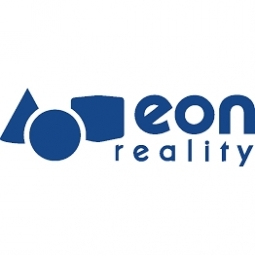下载PDF
Augmented Reality Medical Diagnostics by NHS

技术
- 分析与建模 - 虚拟和增强现实(AR/VR)软件
- 可穿戴设备 - 增强现实(AR)眼镜/耳机/控制器
适用行业
- 医疗保健和医院
适用功能
- 人力资源
用例
- 虚拟培训
挑战
英国国家卫生服务机构是英国的国家公共医疗保健提供者,每年培训数千名医疗保健助理、护士和医生,雇用约 150 万人,使其成为全球前五名的雇主。因此,NHS 一直在寻找更好的方法来培训员工并取得更好的学习成果。
他们发现的一个问题是,对于使用传统培训方法的学习者来说,某些学科领域具有挑战性,这些方法既昂贵又耗时。他们需要一个能够加速关键学科领域的知识转移、降低成本并增加可以接受培训的人数的解决方案。
客户
英国的国民健康服务
关于客户
国民健康服务 (NHS) 是英国公共资助的国家医疗保健系统,也是英国每个组成国家的四个国民健康服务之一。它是最大的
解决方案
EON Reality 被 NHS 选中开发三个具有增强现实功能的交互式平板应用程序,以涵盖三个难以教授的主题:臀位分娩(产科)、胸/肺紧急情况和脓毒症意识/识别。
这些应用程序设计用于病房或教室,然后用作加载到受训人员设备上的“外卖”应用程序,用于异地复习和强化学习目标。
EON Reality 与 NHS 的医生、外科医生和其他主题专家一起创建了应用程序,这些应用程序说明了几种肺部和心脏疾病、三种臀位出生状况之间的差异,以及一种帮助识别患者败血症的诊断工具。
收集的数据
Health Parameters, Labor Costs, Operating Cost, Personal Medical, Video
运营影响
相关案例.

Case Study
Hospital Inventory Management
The hospital supply chain team is responsible for ensuring that the right medical supplies are readily available to clinicians when and where needed, and to do so in the most efficient manner possible. However, many of the systems and processes in use at the cancer center for supply chain management were not best suited to support these goals. Barcoding technology, a commonly used method for inventory management of medical supplies, is labor intensive, time consuming, does not provide real-time visibility into inventory levels and can be prone to error. Consequently, the lack of accurate and real-time visibility into inventory levels across multiple supply rooms in multiple hospital facilities creates additional inefficiency in the system causing over-ordering, hoarding, and wasted supplies. Other sources of waste and cost were also identified as candidates for improvement. Existing systems and processes did not provide adequate security for high-cost inventory within the hospital, which was another driver of cost. A lack of visibility into expiration dates for supplies resulted in supplies being wasted due to past expiry dates. Storage of supplies was also a key consideration given the location of the cancer center’s facilities in a dense urban setting, where space is always at a premium. In order to address the challenges outlined above, the hospital sought a solution that would provide real-time inventory information with high levels of accuracy, reduce the level of manual effort required and enable data driven decision making to ensure that the right supplies were readily available to clinicians in the right location at the right time.

Case Study
Gas Pipeline Monitoring System for Hospitals
This system integrator focuses on providing centralized gas pipeline monitoring systems for hospitals. The service they provide makes it possible for hospitals to reduce both maintenance and labor costs. Since hospitals may not have an existing network suitable for this type of system, GPRS communication provides an easy and ready-to-use solution for remote, distributed monitoring systems System Requirements - GPRS communication - Seamless connection with SCADA software - Simple, front-end control capability - Expandable I/O channels - Combine AI, DI, and DO channels

Case Study
Driving Digital Transformations for Vitro Diagnostic Medical Devices
Diagnostic devices play a vital role in helping to improve healthcare delivery. In fact, an estimated 60 percent of the world’s medical decisions are made with support from in vitrodiagnostics (IVD) solutions, such as those provided by Roche Diagnostics, an industry leader. As the demand for medical diagnostic services grows rapidly in hospitals and clinics across China, so does the market for IVD solutions. In addition, the typically high cost of these diagnostic devices means that comprehensive post-sales services are needed. Wanteed to improve three portions of thr IVD:1. Remotely monitor and manage IVD devices as fixed assets.2. Optimizing device availability with predictive maintenance.3. Recommending the best IVD solution for a customer’s needs.

Case Study
HaemoCloud Global Blood Management System
1) Deliver a connected digital product system to protect and increase the differentiated value of Haemonetics blood and plasma solutions. 2) Improve patient outcomes by increasing the efficiency of blood supply flows. 3) Navigate and satisfy a complex web of global regulatory compliance requirements. 4) Reduce costly and labor-intensive maintenance procedures.

Case Study
Harnessing real-time data to give a holistic picture of patient health
Every day, vast quantities of data are collected about patients as they pass through health service organizations—from operational data such as treatment history and medications to physiological data captured by medical devices. The insights hidden within this treasure trove of data can be used to support more personalized treatments, more accurate diagnosis and more advanced preparative care. But since the information is generated faster than most organizations can consume it, unlocking the power of this big data can be a struggle. This type of predictive approach not only improves patient care—it also helps to reduce costs, because in the healthcare industry, prevention is almost always more cost-effective than treatment. However, collecting, analyzing and presenting these data-streams in a way that clinicians can easily understand can pose a significant technical challenge.






